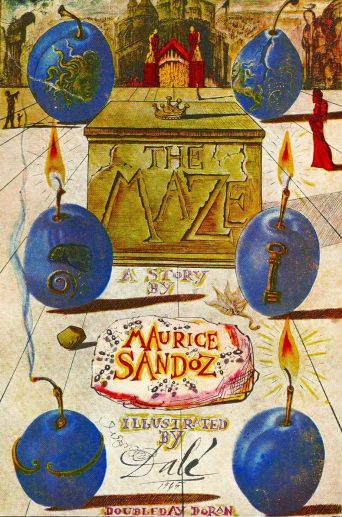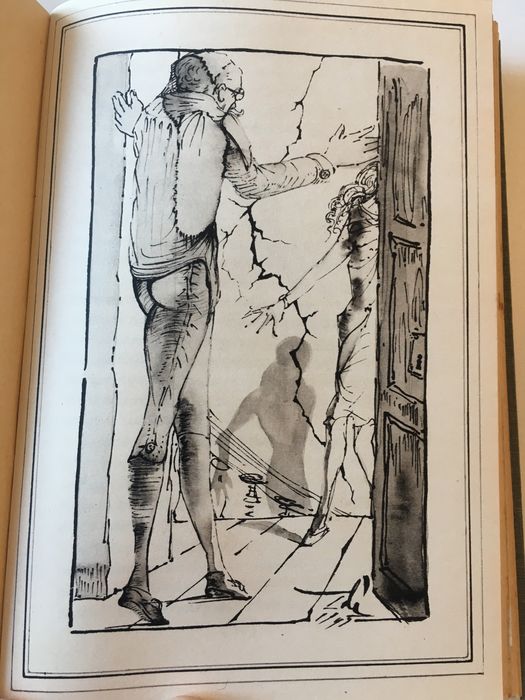 By MAURICE SANDOZ (Doubleday; 1945)
By MAURICE SANDOZ (Doubleday; 1945)
The most famous work by France’s late Maurice Sandoz, a short novel of vaguely Lovecraftian mystery that still holds up—mostly. It’s related, as many early 20th Century horror stories were, in pointless and irritating story-within-a-story fashion, with the unnamed narrator (presumably Maurice Sandoz himself) meeting an old woman in a Swiss hotel who relates the bulk of the novel, preceded by a preface which needlessly enumerates the “mystery” of the story. Thus, it takes the narrative proper some time to get started, although once it does the going is smooth.
…it takes the narrative proper some time to get started, although once it does the going is smooth.
It centers on Edith Murray, whose godchild Kitty is set to marry Edith’s cousin Gerald. But Gerald abruptly breaks off the engagement without explanation, inspiring Edith to accept an invitation to spend a few days at Craven Castle, the forbidding Scottish edifice where Gerald lives, in order to find out the reason for his actions.
Craven has for centuries been owned by Gerald’s family, but in the past two hundred or so years has been beset by strangeness. Foremost among the oddments is the fact that during the period in question none of the lords of Craven have married.
Upon settling into the castle Edith discovers further puzzlements. These include the fact that all the doors in the castle are securely locked each night, apparently because something or somebody is loose therein. This suspicion is confirmed by strange noises heard outside Edith’s room at night, and some slimy residue Edith discovers in the hallway, marked by what looks like a leaf print. There’s also a mysterious hedge maze outside the castle that’s kept off limits to the public. The maze appears to hold the key to whatever is haunting the place, as is made evident by the sight of a servant wheeling a massive plate of food into the maze…
 Maurice Sandoz relates this odd account with a great deal of steadily-building suspense and unpretentious storytelling flair. The quasi-supernatural explanation to all the weirdness will not be entirely unexpected to a seasoned horror reader (especially if s/he has seen the 1953 movie adaptation of this novel), but it is affecting, finishing off the story on a tragic and even poignant note.
Maurice Sandoz relates this odd account with a great deal of steadily-building suspense and unpretentious storytelling flair. The quasi-supernatural explanation to all the weirdness will not be entirely unexpected to a seasoned horror reader (especially if s/he has seen the 1953 movie adaptation of this novel), but it is affecting, finishing off the story on a tragic and even poignant note.
Maurice Sandoz relates this odd account with a great deal of steadily-building suspense and unpretentious storytelling flair.
Of course, I’d be remiss in passing over the illustrations by Salvador Dali. Dali illustrated several of Sandoz’s books, and his pen-and-ink work here is typical of his illustrative work, depicting scenes described in the text with characteristic surreal distortion (i.e. a carriage whose exterior merges with that of the horse drawing it and a banquet whose guests are depicted as featureless ghosts). I’m not sure Dali’s artwork fits all that well with the text (which is not especially surreal), but it does add an extra dimension to this most unique and tantalizing volume.
I’m not sure Dali’s artwork fits all that well with the text (which is not especially surreal), but it does add an extra dimension to this most unique and tantalizing volume.
See Also: FANTASTIC MEMORIES
